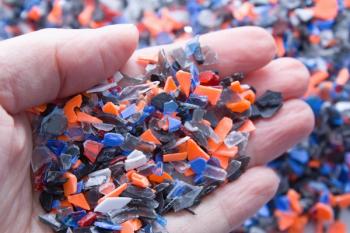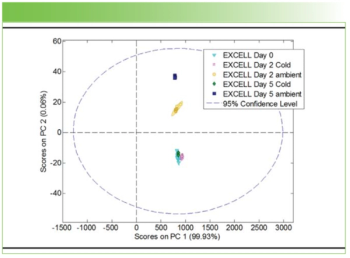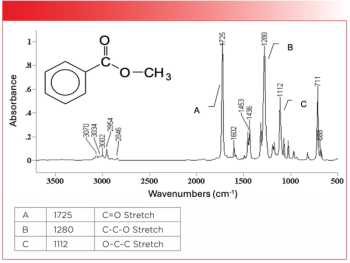
Spectroscopy Reveals Water Ice Explosive Outbursts in Comet 12P/Pons-Brooks
Key Takeaways
- Crystallization of amorphous ice in comet 12P/Pons-Brooks likely triggers its energetic outbursts by releasing trapped gases.
- Spectroscopy revealed crystalline water ice grains, indicating a high abundance of icy grains in the comet's coma.
Using optical and near-infrared spectroscopy, researchers have identified crystalline water ice as the likely driver of explosive outbursts on comet 12P/Pons-Brooks. Their findings link this dramatic cometary activity to a process once observed in comets 17P/Holmes and 332P/Ikeya–Murakami.
A Comet’s Fiery Mystery Unveiled
A team of astronomers has uncovered new clues about the cause of recent outbursts from the Halley-type comet 12P/Pons-Brooks, a celestial visitor famous for its recurring explosive flares. In a study published in The Astrophysical Journal (1), Ruining Zhao, Bin Yang, Michael S. P. Kelley, Silvia Protopapa, Aigen Li, Yang Huang, and Jifeng Liu used both optical and near-infrared (NIR) spectroscopy to probe the comet’s dusty, icy coma during two major outbursts in late 2023 (1).
Their analysis revealed the spectral fingerprints of crystalline water ice grains, providing strong evidence that the crystallization of amorphous ice, a long-hypothesized but rarely observed process, is a likely trigger for the comet’s sudden energetic eruptions.
Spectroscopic Clues in the Near-Infrared
Three NIR spectra were captured using the 3 m NASA Infrared Telescope Facility (IRTF) in Hawaii and the 200-inch Hale Telescope at Palomar Observatory. The spectra showed distinct absorption bands at 1.5 and 2.0 micrometers (1500 and 2000 nm, respectively) characteristic of water ice, superimposed on a red-sloped dust-scattering continuum (1).
According to Zhao and colleagues, these spectral signatures are best explained by a combination of micrometer-sized crystalline ice grains at temperatures of 140–170 K mixed with submicrometer-sized amorphous carbon dust. The modeling suggests that icy grains made up roughly 24% of the coma’s mass fraction and as much as 39% of its volume fraction—a surprisingly high abundance for a comet at 3–4 astronomical units from the Sun (1).
Crystalline water ice exhibits a diagnostic narrow feature near 1.65 μm (1650 nm), which distinguishes it from amorphous ice (2,3). This spectral detail, clearly detected in the Palomar and IRTF data, provided key evidence that 12P’s ice had undergone crystallization—a process known to release trapped gases and drive powerful outbursts.
Emissions in the Optical Spectrum
Complementing the NIR data, an optical spectrum was obtained with the Lijiang 2.4 m Telescope in China during the November 2023 event. It revealed emission bands of CN, C₂, C₃, and NH₂, indicating active gas release in the coma. The ratios of these molecular emissions classified 12P as “typical” in C₃ abundance but mildly depleted in C₂, similar to other Halley-type comets (1).
These spectral findings suggest a balanced yet evolving mix of volatiles and dust, with the optical and infrared data together depicting a complex interplay between icy grains and refractory material during each outburst.
Crystallization Is The Likely Trigger
From the kinetic energy and ejecta mass derived from the November outburst, the team calculated a specific kinetic energy of about 8 × 10³ J/kg, comparable to values observed in comets 332P/Ikeya–Murakami and 17P/Holmes, both previously linked to crystallization events (1).
In this process, amorphous ice trapped deep within the comet’s nucleus suddenly reorganizes into a crystalline form, releasing latent heat and volatile gases that fracture the overlying crust, propelling dust and ice into space (1).
The researchers also derived a refractory-to-ice ratio between 1.7 and 3.2, which falls on the lower end of values measured for comets 67P/Churyumov–Gerasimenko and 1P/Halley. This may indicate that 12P’s outburst regions are enriched in pristine ices—possibly remnants of an early, less evolved nucleus.
A Rare Glimpse of Ancient Ices
Comet 12P/Pons-Brooks, which orbits the Sun every 71 years, last displayed significant outbursts in the 1880s and 1950s. Now, with advanced spectroscopic tools, astronomers are finally able to directly analyze its composition and activity in real time.
“Rapid follow-up spectroscopy is crucial,” Zhao notes, “because water ice features fade quickly as the grains sublimate.” The results demonstrate how spectroscopy in both optical and infrared ranges can reveal not only what a comet is made of, but also the physical processes driving its dynamic behavior (1).
References
(1) Zhao, R.; Yang, B.; Kelley, M. S.; Protopapa, S.; Li, A.; Huang, Y.; Liu, J. Optical and Near-Infrared Spectroscopy of the Outbursting Comet 12P/Pons-Brooks. Astrophys. J. 2025, 989 (2), 146.
(2) Grundy, W. M.; Schmitt, B. The Temperature-Dependent Near-Infrared Absorption Spectrum of Hexagonal H₂O Ice. J. Geophys. Res. 1998, 103 (E11), 25,809–25,822. DOI:
(3) Mastrapa, R. M.; Bernstein, M. P.; Sandford, S. A.; Roush, T. L.; Cruikshank, D. P.; Dalle Ore, C. M. Optical Constants of Amorphous and Crystalline H₂O-Ice in the Near Infrared from 1.1 to 2.6 µm. Icarus 2008, 197 (1), 307–320. DOI:
Newsletter
Get essential updates on the latest spectroscopy technologies, regulatory standards, and best practices—subscribe today to Spectroscopy.




